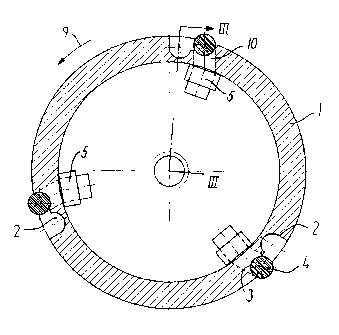Some of the information on this Web page has been provided by external sources. The Government of Canada is not responsible for the accuracy, reliability or currency of the information supplied by external sources. Users wishing to rely upon this information should consult directly with the source of the information. Content provided by external sources is not subject to official languages, privacy and accessibility requirements.
Any discrepancies in the text and image of the Claims and Abstract are due to differing posting times. Text of the Claims and Abstract are posted:
| (12) Patent: | (11) CA 2712464 |
|---|---|
| (54) English Title: | A COUPLING |
| (54) French Title: | ACCOUPLEMENT |
| Status: | Granted and Issued |
| (51) International Patent Classification (IPC): |
|
|---|---|
| (72) Inventors : |
|
| (73) Owners : |
|
| (71) Applicants : |
|
| (74) Agent: | SMART & BIGGAR LP |
| (74) Associate agent: | |
| (45) Issued: | 2015-05-12 |
| (86) PCT Filing Date: | 2009-02-03 |
| (87) Open to Public Inspection: | 2009-08-20 |
| Examination requested: | 2013-07-30 |
| Availability of licence: | N/A |
| Dedicated to the Public: | N/A |
| (25) Language of filing: | English |
| Patent Cooperation Treaty (PCT): | Yes |
|---|---|
| (86) PCT Filing Number: | PCT/DK2009/000027 |
| (87) International Publication Number: | WO 2009100721 |
| (85) National Entry: | 2010-07-16 |
| (30) Application Priority Data: | ||||||
|---|---|---|---|---|---|---|
|
When, according to the invention, a coupling is provided between a driving
shaft (1) and a hub (6), said shaft (1)
being configured with several sets of grooves (2, 3) in which an elastic cord
(4) may extend, the cord (4) in the deep track (2) will
have a slight or poor engagement with the hub (6), while the cord in the low
track (3) will be pressed out into firm engagement
with the hub (6).
Selon l'invention, lorsqu'un accouplement est disposé entre un arbre d'entraînement (1) et un moyeu (6), ledit arbre (1) étant configuré avec plusieurs ensembles de rainures (2, 3) dans lesquelles peut s'étendre un cordon élastique (4), le cordon (4) dans la rainure profonde (2) aura un contact léger ou médiocre avec le moyeu (6), alors que le cordon dans la rainure peu profonde (3) sera pressé en contact ferme avec le moyeu (6).
Note: Claims are shown in the official language in which they were submitted.
Note: Descriptions are shown in the official language in which they were submitted.

2024-08-01:As part of the Next Generation Patents (NGP) transition, the Canadian Patents Database (CPD) now contains a more detailed Event History, which replicates the Event Log of our new back-office solution.
Please note that "Inactive:" events refers to events no longer in use in our new back-office solution.
For a clearer understanding of the status of the application/patent presented on this page, the site Disclaimer , as well as the definitions for Patent , Event History , Maintenance Fee and Payment History should be consulted.
| Description | Date |
|---|---|
| Common Representative Appointed | 2019-10-30 |
| Common Representative Appointed | 2019-10-30 |
| Grant by Issuance | 2015-05-12 |
| Inactive: Cover page published | 2015-05-11 |
| Inactive: Final fee received | 2015-02-18 |
| Pre-grant | 2015-02-18 |
| Notice of Allowance is Issued | 2014-12-22 |
| Letter Sent | 2014-12-22 |
| Notice of Allowance is Issued | 2014-12-22 |
| Inactive: QS passed | 2014-11-26 |
| Inactive: Approved for allowance (AFA) | 2014-11-26 |
| Amendment Received - Voluntary Amendment | 2014-08-08 |
| Inactive: S.30(2) Rules - Examiner requisition | 2014-07-16 |
| Inactive: Report - No QC | 2014-06-29 |
| Letter Sent | 2013-08-08 |
| Request for Examination Received | 2013-07-30 |
| Request for Examination Requirements Determined Compliant | 2013-07-30 |
| All Requirements for Examination Determined Compliant | 2013-07-30 |
| Letter Sent | 2010-11-12 |
| Inactive: Cover page published | 2010-10-20 |
| Inactive: Single transfer | 2010-10-18 |
| Inactive: Reply to s.37 Rules - PCT | 2010-10-18 |
| IInactive: Courtesy letter - PCT | 2010-09-15 |
| Inactive: Notice - National entry - No RFE | 2010-09-15 |
| Inactive: First IPC assigned | 2010-09-14 |
| Inactive: IPC assigned | 2010-09-14 |
| Inactive: IPC assigned | 2010-09-14 |
| Application Received - PCT | 2010-09-14 |
| National Entry Requirements Determined Compliant | 2010-07-16 |
| Application Published (Open to Public Inspection) | 2009-08-20 |
There is no abandonment history.
The last payment was received on 2015-01-02
Note : If the full payment has not been received on or before the date indicated, a further fee may be required which may be one of the following
Please refer to the CIPO Patent Fees web page to see all current fee amounts.
Note: Records showing the ownership history in alphabetical order.
| Current Owners on Record |
|---|
| HH PATENT A/S |
| Past Owners on Record |
|---|
| KELD OTTING HUNDEBOL |